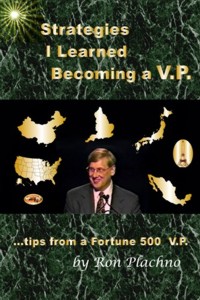| |
DONíT LOSE YOUR NERVE
Some a Direct Excerpt from the Book, and
some paraphrasing the ideas there:
You might think that this section is
about appearance, but it is not. And the reason for this is that the
title might sound like some commercials that say ďNever let them see
you sweat." But no, this is not about appearance. One of the biggest
problems of fear that I see is that it can stop you from thinking.
And if you stop thinking, then you most likely can and will make
mistakes.
Once at work I was asked by the Vice
President, that I was working for, to come up with a plan to triple
the size of our Manufacturing, and he wanted it soon. At first the
idea seemed so ridiculous to me that I just became scared, likely
catatonic, and said nothing. Then the VP said something like, "And I
want it by the End of the Week!"
How does one deal with fear
like this, which is blocking thought? Well, I have learned that for
me that when I begin "working an issue" it begins to become just
hard work and thinking and does not involve fear at all. So then I
decided to break down this assignment. Simplistically, from a design
standpoint, a Factory could simply be considered a combination of
fine people, machines, floor space and inventory parts. And so, if
one multiplied up each of those by 3, then we had an answer. And
that would be 3 times as many people, 3 times as much floor space
and so on. A better answer was to then look for efficiencies, for
those operations or facilities that need not be duplicated that
could still serve the same purpose. And so this "impossible"
assignment that had me catatonic in fear, now became fairly easy to
resolve. It seems one of the issues is to "know yourself" and what
can make your fear go away. In my case, it was beginning to work the
problem - and breaking a hard problem into more simple parts - that
makes fear go away.
|
|
| |
|
|
|
|
 |
|
Book: Strategies I Learned Becoming A VP
During my career, back when Motorola was a huge
thriving company with I heard some 150,000 world wide
employees, I went there from perhaps being the lowest paid
engineer on staff to becoming a Vice President. And that was
not an honorary title only, but a Vice President in charge
of Manufacturing or Engineering of both for a large division
with perhaps yearly a billion US dollars in sales. How did I
do that? Well, I realized I was not born with this
knowledge. I learned it from many people along the way, and
tried to decide what information I was being told made sense
and what information did not make sense. And I learned from
some people.. who I thought were great in business. And so
what is the point of this book? My goal is simply to pass on
business information to others as best as I could, in order
to help others who may come after me. Yes, times change, and
some may have to modify the strategies here as the world
continues to change. But logic does not change. And you
might just find this book a good help at a reasonable price. |
|
|
|
|
|
|

